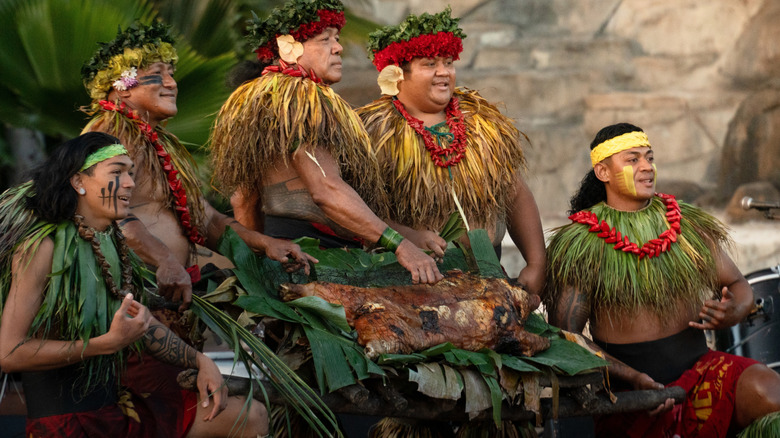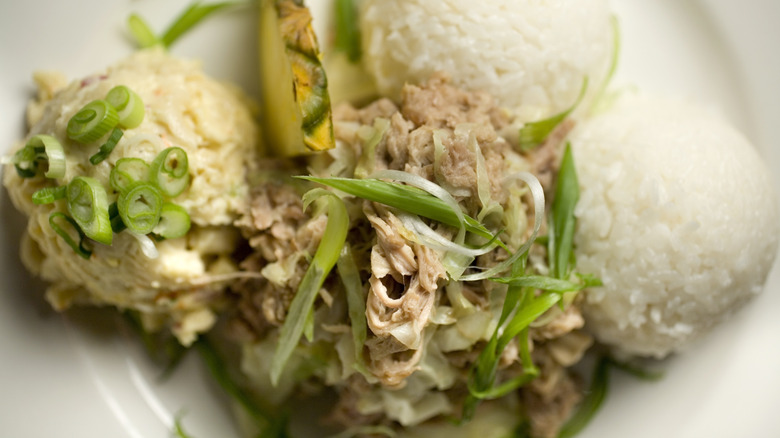What Makes Hawaii's Kalua Pork Unique?
When you're in Hawaii, eating kalua pork is practically a rite of passage. Served at luaus and most Hawaiian-style eateries, this shredded pork is one of the oldest traditional dishes served in the islands. But aside from kalua pork being delicious, it's also not just your average barbecue shredded pork dish. In the Hawaiian language, the word kalua describes cooking underground in an oven or pit which is exactly how the pork is prepared: An entire pig is cooked for hours in an earthen oven, or imu.
As if that weren't enough to make kalua pork unique, it's also important to note that pigs have played an important role in Hawaii's history. On these small islands in the middle of the Pacific, there were no known land mammals — not until the first Polynesian settlers arrived around 400 A.D., along with plants such as coconut palms and taro.
While Hawaiians didn't abstain from eating pork, they traditionally avoided hunting pigs, preferring to use them for agricultural purposes instead. There were also gender-based laws that, among other things, banned women from eating certain foods, including bananas, taro, and pork, because of their association with male gods. For hundreds of years, only men were allowed to taste this bounty until King Kamehameha II struck the law down in 1819. Ever since, kalua pork has been a staple of Hawaiian life for everyone.
How is kalua pork prepared?
Like Spam musubi and the Hawaiian-style puka dog, kalua pork is a popular Hawaiian dish, though it is one rooted in indigenous culinary traditions. For the imu method, an earthen pit is filled with wood from a koa or kiawe tree, lit on fire, and then topped with lava rocks which will stay hot for several hours. The pig, which is seasoned with Hawaiian salt or red salt, is positioned on top of the rocks along with vegetables or fruit such as taro or breadfruit. Banana leaves and other materials are then spread across the top to protect the pig and create steam. Then the entire pit is covered with dirt, and the pig is left to cook for anywhere from six to 24 hours. The whole process can take up to three days.
Eventually, the cooked pig is dug up and the tender, smoky, juicy pork inside is shredded. What creates the unique kalua pork flavor is the smoke produced from the native trees, as well as the steam from the banana leaves. Plus, of course, there's the way in which it's served: alongside cabbage, Hawaiian macaroni salad, and rice.
If you want to enjoy kalua pork outside of Hawaii, the method is much simpler. You just need a pork butt roast, water, Hawaiian or red salt, and a tablespoon of liquid smoke. Don't worry, you don't need to dig a giant hole in your backyard. You can mimic the imu effect in a slow cooker or conventional oven, like chef, restaurateur, and television host Sam Choy recommends on Facebook (his version uses banana leaves and only takes five hours). Voila! A near-instant luau.

